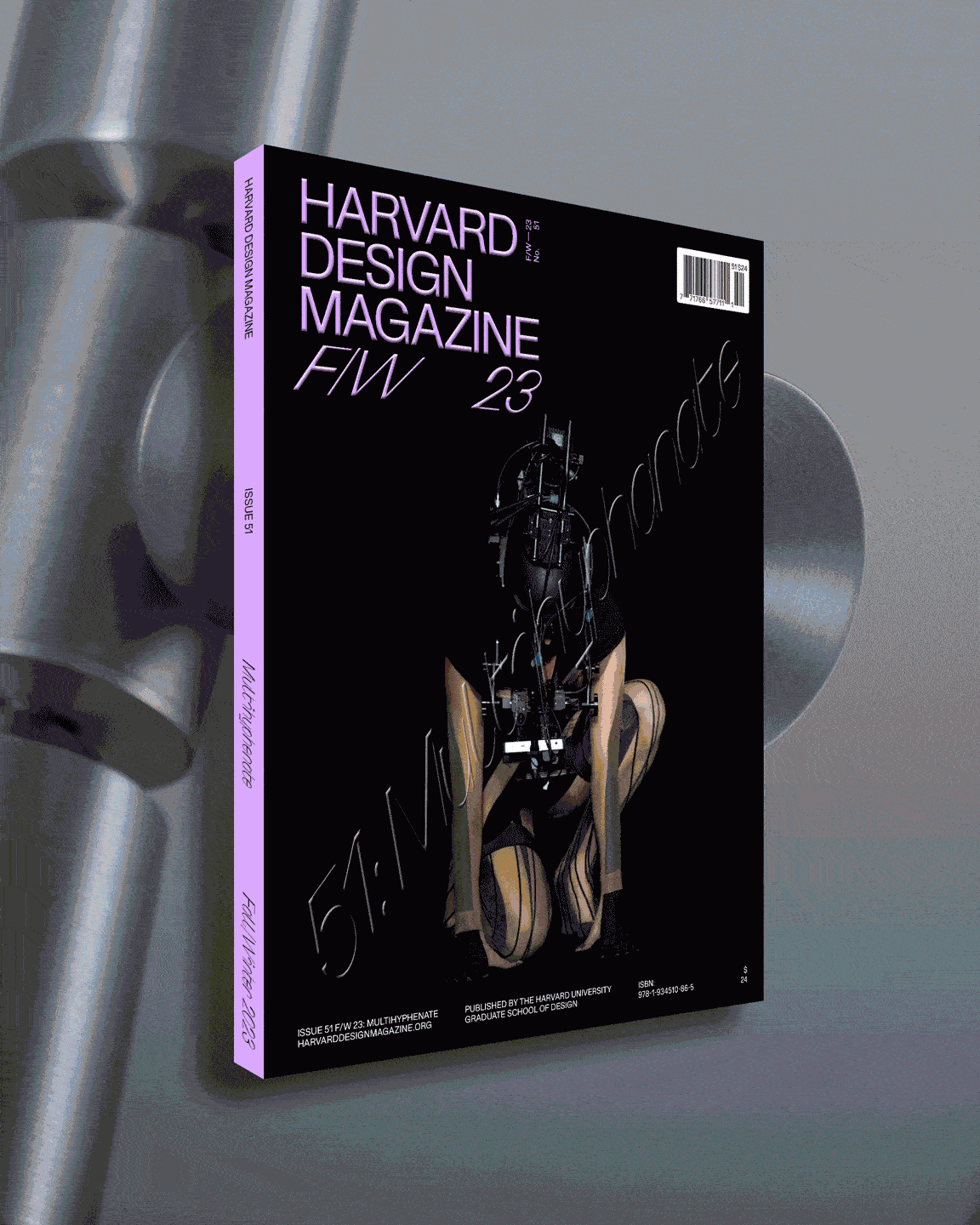Multihyphenation is a compound term referring to alternate modes of creative production: “Collab” culture; “brand X brand” projects; and multiple, or even opaque styles of attribution and ownership among the individuals, studios, and practices that engage in such work. For them, the “body of work” they produce matters more than maintaining a singular creative identity as an individual designer, architect, artist, and so on. As Virgil Abloh—the consummate multihyphenate—once remarked in an interview, “it’s explicitly the fact that I split my time among many things that gives me the point of view to know that what I’m doing is relevant.” Which is to say that one way of navigating a world dominated by multinational corporate firms and global brands is simply to become a multiplicity: architect-hyphen-curator-hyphen-art director-hyphen-furniture designer-hyphen-theorist-hyphen-fashion designer, etc., etc., ad infinitum.
The 51st issue of Harvard Design Magazine, “Multihyphenate,” is guest edited by Sean Canty, Assistant Professor of Architecture, and John May, Associate Professor of Architecture, both from the Harvard Graduate School of Design, and Zeina Koreitem, design faculty at the Southern California Institute of Architecture (Sci-Arc). The guest editors have invited an international group of architects, curators, fashion designers, scholars, and artists to question the issue’s theme from different vantagepoints. Is multihyphenation actually new? SUPERSTUDIO, Rem Koolhaas, Denise Scott Brown, the Eameses, Eileen Gray, even Le Corbusier (the list is endless)—weren’t they all, in some way or another, multihyphenates? Or is something different happening today? Is multihyphenation a legitimate political response to present conditions, or must it always devolve into a cynical branding strategy? And crucially, is this model of practice allowing marginalized voices in the design fields to have more presence? Were there multihyphenates in the past who were overlooked in their own time, precisely for their marginal status?
The issue features curator Antwaun Sargent in conversation with artists Rick Lowe and Amanda Williams, as well as interviews by the guest editors with fashion designer Casey Cadwallader of Mugler, artist Farah Al Qasimi, and Felix Burrichter, founder and creative director of PIN–UP magazine. An essay by artist Irena Haiduk on the Third Way and Yugoslav fashion designer Aleksandar Joksimović is accompanied by never before published drawings by the designer. Architect Andrew Witt and artist collective Metahaven consider the future of artificial intelligence in design in a pair of essays. The issue also includes a lecture by the artist, designer, and landscape architect Barbara Stauffacher Solomon, given at the Harvard Graduate School of Design in 1986, as well as other contributions by Jasmine Benyamin, Esther M. Choi, Jean-Pascal Flavien, Carolyn L. Kane, Mark Lee, Malkit Shoshan, Oana Stănescu, and Alfredo Thiermann. The issue concludes with a series of dispatches from curators and editors from around the world, including Edward Enninful, Hans Ulrich Obrist, Sumayya Vally, Carson Chan, Tosin Oshinowo, Jan Boelen, Nora Razian, Aric Chen, Shirley Surya, Fredi Fischli, and Niels Olsen.
A highlight of the issue is a visual folio featuring more than 40 multihyphenated works that exemplify complex strategies for navigating creative practice today. The folio is a conceptual anchor of the print publication, designed by Copenhagen-based cross-disciplinary office Alexis Mark. “Multihyphenate” employs AM Explorer, an issue-specific typeface developed by Alexis Mark as an homage to Microsoft’s Internet Explorer browser, which was retired in 2022.
Issue 51 of Harvard Design Magazine highlights the practitioners who navigate their fields as multiplicities. A related exhibition featuring work that embodies the condition of being multihyphenate—titled “Multihyphenation”—will be on view in the Druker Design Gallery at the Harvard Graduate School of Design from August 30 through October 9. The exhibition is also curated by Sean Canty, Zeina Koreitem, and John May.
For subscriptions and purchases of individual copies of current and back issues, please visit the Harvard Design Magazine website. Harvard Design Magazine is an architecture and design magazine that probes at the reaches of design and its reciprocal influence and impact on life and culture. Published twice a year, the magazine considers design’s vital relevance to our contemporary world through an interdisciplinary lens, and it strives to bring design and critical writing about design to a broad audience that includes a discerning and curious public alongside an international readership composed of architects, designers, students, academics, and artists. Harvard Design Magazine is led by Editor in Chief Ken Stewart and Managing Editor Meghan Ryan Sandberg.
For inquiries: Joshua Machat, Assistant Director, Communications and Public Affairs, jmachat@gsd.harvard.edu



